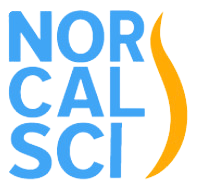SEARCH FOR SCI CURE: small molecule might pack a heavy punch in recovery
Could a small molecule complement regenerative therapies in spinal cord injury? Researchers from Boston Children’s Hospital have identified a small molecule drug with the potential to restore the ability to walk in patients with spinal cord injury.
A recent study, published in Cell, suggests a systemically given small molecule could revive neural circuits in mice with spinal cord injury, restoring their ability to walk. The research, which was carried out at Boston Children’s Hospital, could complement regenerative therapies, aiding those with paralysis caused by spinal cord injury.
The compound, CLP290, is known to activate the protein KCC2, and was demonstrated to allow paralyzed mice to regain stepping ability within 5 weeks of treatment. “For this fairly severe type of spinal cord injury, this is most significant functional recovery we know of,” commented lead author, Zhigang He.
“We saw 80 percent of mice treated with this compound recover their stepping ability.”
The research was inspired by successful epidural electrical stimulation-based methods, which are the only treatments found to be effective in spinal cord injury patients. The researchers selected compounds known to both cross the blood–brain barrier and alter the excitability of neurons. Each compound was administered to mice that had severe spinal cord injury with some nerves intact, via intraperitoneal injection. The groups were treated for 8–10 weeks.
CLP290 was shown to elicit the most potent effect, enabling paralyzed mice to regain stepping ability within 4–5 weeks of treatment. The two relevant hindlimb muscles were shown to regain activity via electromyography recordings, and the walking scores remained higher than the control group for 2 weeks after treatment ended.
After a spinal cord injury, research suggests the inhibitory neurons produce far less KCC2, which stops them from properly responding to signals from the brain. This results in the neurons responding only to excitatory signals but not inhibitory signals.
As the neurons themselves are inhibitory, the over-firing of excitatory signals results in a general inhibitory signal. Restoration of KCC2 is thought to restore function of the inhibitory neurons to receive inhibitory signals from the brain, shifting the overall circuit back towards excitation.
“Restoring inhibition will allow the whole system to be excited more easily,” He explained. “Too much excitation not good, and too much inhibition is not good either. You really need to get a balance. This hasn't been demonstrated in a rigorous way in spinal cord injury before.”
The team is now investigating other compounds that act as KCC2 agonists, hoping that KCC2 restoration combined with epidural stimulation could maximize a patient’s recovery following a spinal cord injury.
“We are very excited by this direction,” concluded He. “We want to test this kind of treatment in a more clinically relevant model of spinal cord injury and better understand how KCC2 agonists work.”
This article appeared on https://www.rx-network.com/

